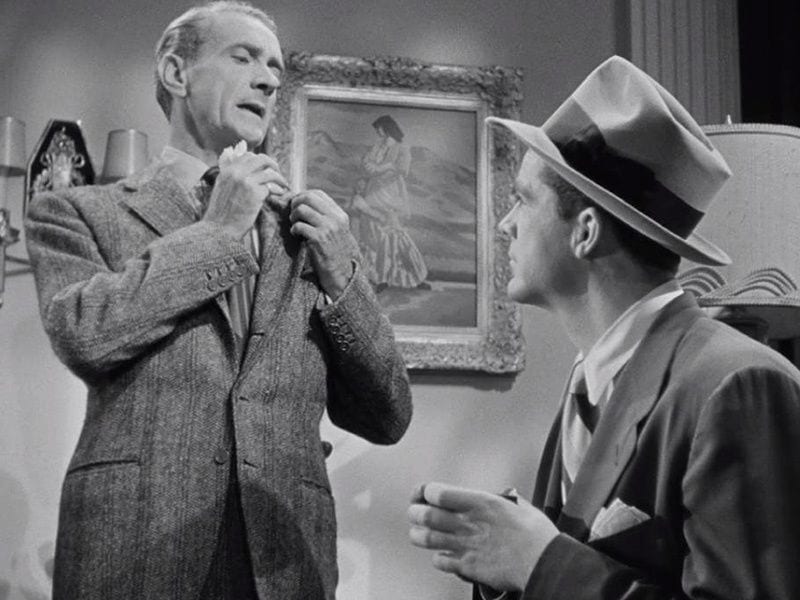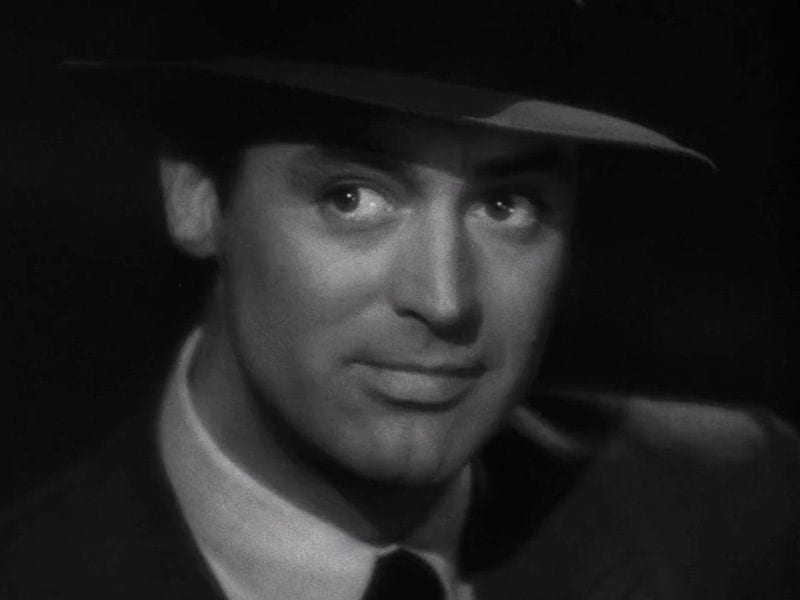
Something strange happens when a film studies text that seems to start as a legitimate search into the sensual pleasures of cinema over the past century so quickly and unabashedly starts tp enjoy wallowing in the most base and prurient speculation. The strange feeling comes in several levels. At first, the reader feels safe. There’s a familiarity with the author, his past efforts, his appreciation that cinematic history has always had an uncomfortable relationship with truth. David Thomson knows that all the original stars in the Hollywood sky have always managed to thrive through secrecy, often of the darkest nature. Kenneth Anger’s 1965 benchmark for exposing sordid truths and speculation, Hollywood Babylon ( J.J. Pauvert) was exposed for the irresponsible and wildly excessive Hollywood history that it was in the later episodes of Karina Longworth’s wonderful 2014-2018 podcast You Must Remember This. Quite simply, Longworth proved that context and a clear singular thesis introduced at the start and carried through without a trace of dirt was the only dignified way to deal with the secret hidden lives and repressed desires of the stars from Hollywood’s Golden age.
What’s refreshing about current film historians like Longworth is their willingness to understand that the old days and the old ways don’t need to be preserved at all costs. Perhaps it’s asking too much for a film text about desire and lust and sexual identity to be dignified. Readers might not feel dignity has any place in desire as evoked in Hollywood film. The problem might be that from its title through to most characters and story lines covered in David Thomson’s Sleeping With Strangers: How the Movies Shaped Desire, the author just isn’t honest with himself, the audience, or most of the real people (stars, directors, writers, and more) drawn into his rambling narrative.
The biggest problem is this book’s distinct lack of a singular vision and Thomson’s apparent unwillingness to accept changing times and perspectives. Is it just about sexual desire, or does Thomson want us to consider envy and lust and jealousy? The dirty feeling the reader gets by the end of this book has less to do with the subject matter than the claims Thomson sets out to make. Is this supposed to be a chronicle of gay history in Hollywood film (explicit or not), or are we supposed to realistically receive Thomson’s contention (more about this later) that just about every auteur or “pretty” person (man or woman) in front of or behind the screen was (or is) gay. Had Thomson carried through with the former, it might have been an interesting and important book. Unfortunately, he quickly falls into a pattern where he seems desperate to tie everything and everybody (beyond the more understandable closeted subjects like Cary Grant, James Dean, and Katherine Hepburn) to gay themes. The effect is equal parts ludicrous and insulting.
The strange tone Thomson adopts early in this book never quite feels comfortable or legitimate. Take this passage in the Introduction, where he discusses Warren Beatty’s star turn in the landmark 1966 film Bonnie and Clyde:
“Warren Beatty isn’t gay… Nor do you in the dark have to be gay to enjoy the film. But there’s a gayness in the medium that we’re never going to shrug off…”
It’s not that Thomson’s style isn’t compelling and captivating. In his first chapter he writes about an emotionally intimate connection with a gay friend from his salad days in England, well over half a century ago. “If our culture is to survive, or deserve survival,” he writes, ‘then ‘straight’ people need to accommodate and learn from gay experience. The two ways need to become more alike.” Certainly the intentions seem honest, but they’re introduced with a patronizing tone. Starting with the story of Rudolph Valentino in the ’20s certainly makes sense. Thomson contrasts Valentino’s flamboyant vision of manhood with Douglas Fairbanks’s more rugged masculinity. “‘Doug’ was a universal hero and a reliable American.” The more sordid story of a third star from that period, Ramon Navarro, murdered in his home in 1968 by two gay hustlers, is the first hint the reader gets that Thomson might have an over reliance on (and comfortability with) the sensational.
Thomson is on track early on, but it doesn’t seem he’ll stay there for long. “Movies are the industrialization of murder and orgy as regular human fantasies,” he writes, after reflecting on the voyeurism of David Lynch’s 1986 film Blue Velvet. It’s in the brief Chapter on ’30s sex symbol actress Jean Harlow and her likely closeted husband Paul Bern that Thomson tries to build on his apparent argument that we are all somehow complicit in building an illusion of normalcy: “Our dreams can be seen as hackneyed video games. Sincerity has turned hypothetical. So men cling to desperate masculinity as if it was a gun…” Unfortunately, this staccato delivery of questionable observations never really amounts to anything, and Thomson’s apparent eagerness to open threads without following through with them is frustrating.
While Thomson’s overall effect is problematic, there’s a logical sense to his process. He introduces Gary Cooper and Johnny Weismuller, two additional male matinee idols of the ’30s-’40s who were, respectively, realistic and fantastic. Cooper was the rugged cowboy or law enforcer, and Weismuller the classic Tarzan of the Jungle. Of director Josef Von Sternberg and his relationship with muse Marlene Dietrich, Thomson describes the former as “…a fatalistic heterosexual” and the latter as ‘…an easygoing bisexual.” He writes that Von Sternberg and Dietrich were foreigners working within the Hollywood system and helping to undermine (or redefine?) the “American code of love”. It’s not clear where Thomson wants to plant this argument, or why.
When he reaches his chapter on the Hays Code, that 1934 standard under which Hollywood was expected to produce films that were both respectable to and palatable for the American viewing public, Thomson sets forth more claims that he really doesn’t keep by the end of the book: “I don’t intend to compile a list of gay careers. Nor do I want to ‘out’ people… I want to extend the proposal that the atmosphere of all movies had a gay air…” In effect, as he attempts to speculate on gay subtexts in some of the greatest Hollywood films and their stars, what might have been an attempt to properly and respectfully “normalize” such themes, this book comes off as more fearful than compassionate. Apparently, most costume designers were gay, but what does Thomson mean by “homosexual clothes”? Thomson discusses the musical genre of films and notes that Leonard Bernstein and Jerome Robbins were gay, but what does he mean when he notes that fellow musical film performers and creators were “robustly heterosexual?” This way of cornering artists comes off as defensive and as a result it negates Thomson’s likely hope that his readers be compassionate and receptive to differences.
Otto Preminger’s Laura, (1944) and the obviously closeted Waldo Lydecker (Clifton Webb) are discussed, along with Judy Garland in Vincente Minnelli’s film Meet Me In St. Louis (1944). Thomson brings in Elsa Lanchester and her classic title role in gay director James Whale’s Bride of Frankenstein (1935). She was married to the closeted (to the public) Charles Laughton, and she tolerated what she called “his homosexual streak”. In his discussion of the great director George Cukor, Thomson successfully proves his argument that sexual proclivities and orientation behind the screen were not a barrier to success. Did a young Clark Gable turn tricks as a male hustler during his early Hollywood days when he worked with Cukor in his 1939 film, Gone with the Wind?
Again, the problem with the strong stories is that Thomson seems more interested in just introducing them and moving on to other, more sensational topics. Spencer Tracy and Katherine Hepburn. The deep exploration of the relationship between (and professional partnership of) these two stars is effectively covered here, with suggestions that Hepburn was more fond of sexually intimate relationships with women than perpetuating a decades-long affair with the married Tracy. One of the biggest problems in this section comes when Thomson relies on accounts from legendary handyman and Hollywood gay hustler/pimp Scotty Bowers, whose 2012 memoir Full Service (Grove Atlantic) offered an unabashed outing of many stars, including Tracy. Thomson realizes Bowers is an unreliable, untrustworthy source: “I don’t trust Scotty Bowers, but I can’t forget him.” If that’s the case, why is he included here at all aside from the titillation quotient? The same goes for screenwriter Garson Kanin, whose 1971 memoir, Tracy and Hepburn (Viking), was also seen as a betrayal of confidence.
Thomson knew Hepburn, and others in this book, and his narrative includes reflections on his relationships with them. Is he too close to his subjects? That’s less problematic than when he starts discussing male-based Westerns. His discussion of George Roy Hill’s Butch Cassidy and the Sundance Kid (1969) is an interesting deconstruction of their lovely proto-metrosexual male archetype, but at the same time he seems defensive:
“No, we’re not outing Paul Newman or Robert Redford, though by 1969 both actors would have agreed that there was nothing wrong in being gay… The one current movie star who is gay, and who has owned up to it, is Kevin Spacey, not just out now, but erased.”
That point is of course well taken, but it assumes that any “out” star will automatically be erased. Thomson’s phrasing, “owned up to it”, seems to be saying that being gay is something that has to be admitted, and the inclusion of Spacey here seems to be suggesting that the legal allegations against Spacey are also an element of his sexuality, rather than his own legal and human failings. Again, in an attempt to generate understanding and contextuality in film history, Thomson only ends up perpetuating myths and stigmas against homosexuals.
Thomson fails again when he dismisses (by pure omission) the presence of female buddy films from actors Tina Fey and Amy Poehler, or the work of writer/director Paul Feig (Bridesmaids, 2011). In his deep and effective discussion of possible gay subtexts in The Sweet Smell of Success (Alexander Mackendrick, 2011), Thomson writes: “I can find no evidence that anyone on the picture intended the undertone I am describing, or was aware of it.” The reader then wonders why he even bothered speculating. The same goes for whether or not stars Tony Curtis or Burt Lancaster were gay. Thomson continues in this chapter with his defensive claims: “Many Hollywood stars, a good number of them fervently homosexual, had changed their names or had them changed for them…” What does it mean to be “fervently heterosexual”? Is sexuality a condition that can be tangibly measured?
The stories of sexual subtexts in the films and personas of James Dean and Montgomery Clift are well known and have been carefully detailed in others texts, like Donald Spoto’s Rebel: The Life and Legend of James Dean (HarperCollins, 1996) and Patricia Bosworth’s Montgomery Clift: A Biography (Harcourt Brace Jovanovich, 1978). As a result, the more interesting subject here is Cary Grant. The problem comes, however, when the reader has to stumble through Thomson’s transitions: “If you are reading this book to settle whether or not Cary Grant was gay, I have to warn you — hold on to some doubts.” Thomson seems convinced that his reader only wants outings to happen, secrets to be revealed. “I remain uncertain as to whether he was homosexual for a time in his life,” Thomson writes. “Gayness does not need forgiveness — or explanation.” That last line, true as it is, seems to clash with Thomson’s sensationalistic tone and apparent mission to identify all his players and all plots as gay. Also, it’s difficult to know what Thomson means by that first line. Is homosexuality inherent in the execution of the act or the essence of the person? Thomson knew Grant, and concludes that it doesn’t matter whether or not he was gay, but it’s too little too late.
For Thomson, Andy Warhol was “…a bland but single-minded gay filmmaker…[who] had no faith in anything. He discusses the HBO program, The Deuce (2017-) a celebration of pornography in ’70s New York City. One of its stars, James Franco, notes “…I like to think I’m gay in my art and straight in my life.”
Further, in a wrongheaded move taken while discussing likely sexual abuse experienced by actress Natalie Wood, Thomson chooses to focus on the actress and her desires rather than the predatory nature of Hollywood in the ’40s and ’50s (and beyond):
“Natalie wanted to be noticed… all she had going for her were her amazing eyes, her bursting need, and being sixteen.”
What does this mean? Was she complicit in her victimization by the very essence of her femininity? It’s a horribly misplaced and ill-timed dismissal of a woman and her pain from many years ago in a current era when we aspire to be more enlightened.
Thomson loses both credibility and objectivity in his section about his longtime friend writer/director James Toback, accused of sexual indiscretions and predatory behavior by hundreds of women. While condemning his friend on the basis of clear evidence, Thomson goes on to note life in Los Angeles made it impossible to avoid “…young, slim, attractive women and their aptitude for being approached.” Thomson seems more surprised that women minded Toback’s behavior than that Toback was allowed a forum for such a personality, if you will, for all those years.
How does Thomson end this book? Where does he want us to place our alliances? It’s hard to tell. As we leave Sleeping with Strangers, we’re not more enlightened about or close to any answers as to gay subtexts in Hollywood films, the separation of desire into various areas (carnal, intellectual, spiritual), and we have no clear understanding that what was tolerated as recently as 20 years ago is no longer up for consideration. Had Thomson chosen to balance his examination from all sexual perspectives and restrict it to a fixed and focused objective, this could have been an important book. As is, Sleeping with Strangers proves more insulting and patronizing than illuminating. Thomson has a strong understanding of cinematic history, but he imposes too much of himself here and the end results are jumbled and hazy. Movies do steer us towards desire, longing, and envy, but Thomson doesn’t acknowledge historical socio-political changes and their effect on the creative process. Dismissing those factors makes for a missed opportunity.




